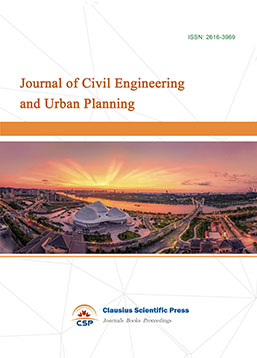The Application Trend of Qing Dynasty Garden Design in Beijing Modern Residential
DOI: 10.23977/lsuh.2023.050107 | Downloads: 9 | Views: 586
Author(s)
Qiwei Liu 1, Hushinaidi Bin Abdul Hamid 1
Affiliation(s)
1 Faculty of Creative Industries, City University, Kuala Lumpur, 46100, Malaysia
Corresponding Author
Qiwei LiuABSTRACT
After more than three thousand years of accumulation and development, traditional Chinese gardens have created their own profound and unique style of landscape architecture, which has important historical, cultural and artistic research and application value. In the Qing dynasty, the landscape of the Qing dynasty (1636-1912) was particularly developed in the Qing dynasty in 276 years. The capital of the Qing dynasty is today's Beijing, which is now the capital of China, so the landscape design style of the Qing dynasty is the most profound. Its pursuit is the perfect combination of man and nature, which also conforms to the expectation of the present people. This paper, through the study of the application of landscape application in Beijing, expounds the trend of contemporary Chinese people's demand and research on traditional culture, and the Chinese Qing dynasty style of residential houses are developing in a low-key and luxuriant way. The Chinese style of residential community is emerging in major Chinese cities, and it is a positive significance for the development of traditional culture in the traditional culture.
KEYWORDS
Qing Dynasty, garden design, modern residentialCITE THIS PAPER
Qiwei Liu, Hushinaidi Bin Abdul Hamid, The Application Trend of Qing Dynasty Garden Design in Beijing Modern Residential. Landscape and Urban Horticulture (2023) Vol. 5: 37-41. DOI: http://dx.doi.org/10.23977/lsuh.2023.050107.
REFERENCES
[1] Fu, Y. (2020). The concept of cultural integration of the canal, the landscape design of china-new Chinese gardens. Building economy, 41(11), 133-134.
[2] Hui, H. (2017). The application of the new Chinese landscape in the design of commercial real estate. Modern gardening (12), 100-101.
[3] Jiang, L., Wan, J., & Pan, B. (2011). A preliminary study of new Chinese landscape. Northern Horticulture (06), 119-121.
[4] Li, B. (2007). Art of Survival Considering the Direction of Landscape Architecture in Contemporary China: The Art of Survival. Urban Environment Design (03), 19-21.
[5] Long, J. (2009). The encounter between tradition and modernity -- on "New Chinese Style" landscape design. Landscape Architecture Academic Journal (01), 42-45.
[6] Lu, C. (2020). Analysis on the inheritance and development of the classical garden in the new Chinese garden -- an example of the mountain of yongtai in fuzhou, Fuzhou. Modern gardening, 43(10), 132-134.
[7] Shi, Y. (2014). The application of "New Chinese Style" in landscape design. Chinese Horticulture Abstracts, 30(03), 110-111.
[8] Tang, W. (2000). Chinese Urban Planning at Fifty: An Assessment of the Planning Theory Litterature. Journal of Planning Literature, vol. 14, no. 3.
[9] Yang, Y. (2020). The application of shallow point, line and surface in the new style of Chinese style. Art education research (11), 70-71.
| Downloads: | 502 |
|---|---|
| Visits: | 38993 |
Sponsors, Associates, and Links
-
Journal of Sustainable Development and Green Buildings

-
Bridge and Structural Engineering

-
Soil Mechanics and Geotechnical Engineering

-
Journal of Civil Engineering and Urban Planning

-
Journal of Municipal Engineering

-
Heating, Ventilation and Air Conditioning

-
Indoor Air Quality and Climate

-
Computer Aided Architecture Design


 Download as PDF
Download as PDF